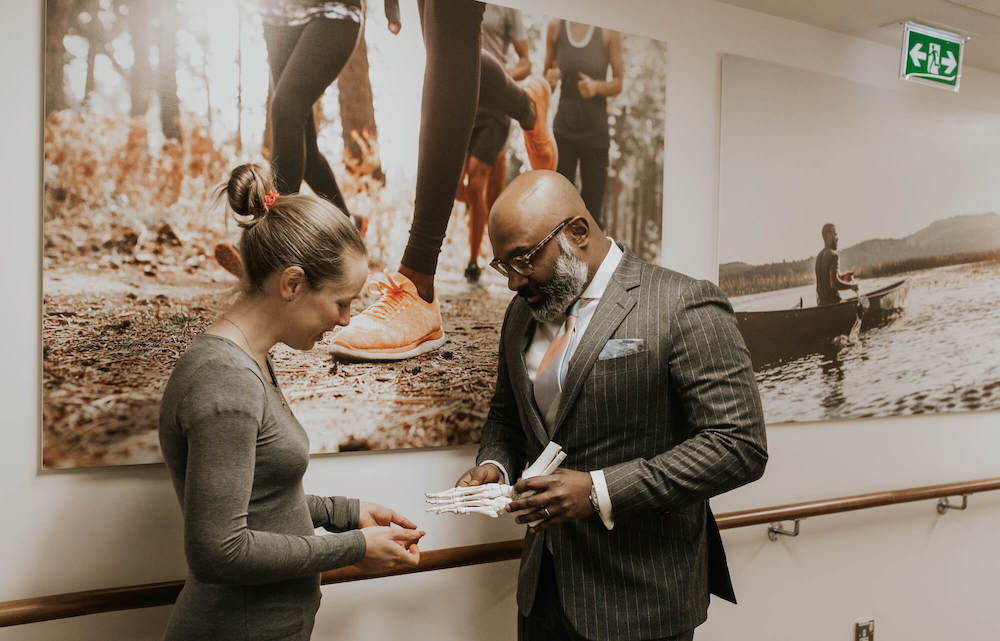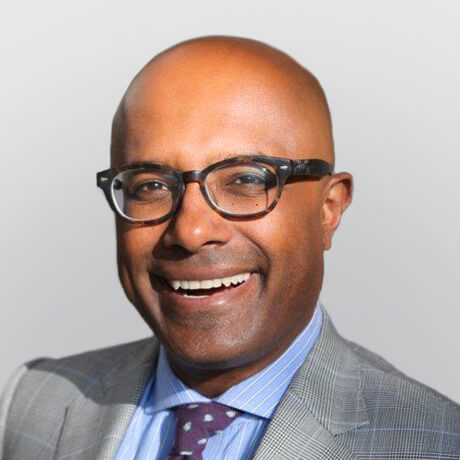Mr Kumar Kunasingam is a consultant orthopaedic surgeon who specialises in feet and ankles. He took some time to chat to physiotherapist Zoe Birch about physiotherapy after foot or ankle surgery and how important a multidisciplinary approach is to effective rehabilitation.
Zoe: Surgeons and physiotherapists are known to work together with patients post surgery. But how important do you think the relationship is for the patient?
Kumar: I think it’s a crucial relationship. For a foot and ankle surgeon like myself often it’s a trinity of surgeon, physiotherapist and podiatrist. And I am very particular about who I work with. I want to be able to say to my patients: “This person is amazing. I’m going to send you to them. I know how they think. They know how I think.” When there’s a really good relationship, there’s a fluidity to the care that I think is really, really important.
Certainly when I started my career as a consultant, it was a badge of honour for me to say: “Well, I’ve done the surgery and they don’t need any physiotherapy.” But I was totally wrong. Totally wrong! And I’m happy to put my hand up about that. If you get the right team together it results in an amazing experience for the patient and a great outcome.
I want my patients to understand that there’s a group of people I refer to and I’m very honest and open that I’m being specific because I have their best interests at heart.
Zoe: How important is it for you that the physiotherapist working with your patient understands the procedure that they’ve had?
Kumar: In an ideal world we would be in constant communication. We would be in the same practice, the same rooms. Realistically, in a busy centre like London it’s very difficult. Patients will travel to a certain extent, and we also travel to make things work. So we can’t really see each other’s practices in great detail. So having an experience of one or two of the surgeries, such as keyhole bunion surgery or Achilles reconstruction, knowing about the types of surgeries and the follow ups. Going to a couple of talks, maybe having a social discussion about the pros and cons of each is good.
I think each surgery has a personality, and each patient has a personality. And so if the surgeon and the therapist can understand the personality behind these things, they can work together to overcome the pathology and make the recovery a lot quicker.
Zoe: When looking for a physio to work with, what are you looking for in that person to ensure your patients get the best care?
Kumar: I think this is basically the same as what a good physio is looking for in a good surgeon. Knowledge is key. But’s it’s the understanding and application of that knowledge which is crucial. Sometimes that comes from experience, but sometimes it comes from the practicality of understanding patients. I think that’s really, really important. You’ve got to be able to provide bespoke care for each patient. So it’s not: “This is a keyhole bunion, or “This is a keyhole ligament repair.” It’s, “This is Mr or Mrs X and they have these needs and expectations.” That’s really, really important. It’s understanding how often to see them so that they don’t disengage. How physiotherapy fits in their lifestyle.
And then it’s about being gentle but firm. Some patients need to be told exactly where they’re going wrong and how to push themselves, and some are very naughty, and they don’t engage with what they’ve been told many times before. Their recovery’s going to be a bit slower. And so there shouldn’t be fear to confront them and tell them they need to push themselves harder. And most, if not all of them come back and say: “Thanks very much. If you hadn’t given me that kick I wouldn’t have made it.”
People can be very complacent after surgery, because after that part of their body’s fixed, they will just soldier on. Get back to work and life, etc. But it will never be the same as it was before. You can get as good as you can with the right therapist.

Zoe: How often do you like to communicate with a physiotherapist, and what information do you need from them to understand how your patient is recovering?
Kumar: I’d expect and want my physiotherapist - just as much as they’d want me - to pass on information that is relevant at the time. So it’s about progress. If the patient is making slow progress or there’s something that they think, “Hang on, I haven’t seen this in this guy’s patient before. It seems out of the ordinary.” Then I want to know about it.
Often it’s reassurance that a patient needs. So I think the answer to that question is: “As much as is needed.” It’s just what the individuals feel. The stronger the bond, the easier that discussion is, and often the shorter it is as well.
Zoe: Do you think it’s important for a physiotherapist to work with your patients before their surgery?
Kumar: There are some pathologies in the foot and ankle when I think it’s really important to have physiotherapy. It’s usually the soft tissue pathologies - so ligaments and tendons, for example. Some of the hard bone pathologies, there’s isn’t a huge amount that physiotherapy can actually do.
So with ligaments for example, working to strengthen the accessory muscles and tendons that help support that joint is crucial. The core strength of that joint is absolutely crucial. Getting the physical and mental well-being of the patient right is also crucial.
Reflecting on the question before about how I would prepare my patient to work with a physiotherapist, you as a physiotherapist might say “You should see this surgeon.” It’s the same the other way round. So I would say that preparing them mentally as well as physically is really important, so they know what journey they’re about to go on. And I reiterate that when I see them. So there’s a bit of an overlap in what we’re doing.
A lot of patients have never been through surgery or an anaesthetic before. There’s fear and anxiety and so often if you can take that off the table by reassuring them that they are seeing the right person and this will solve their problems to the best of that person’s ability within the remits of their risk profile, then they’ll have good outcomes.
Often, I’ll talk to patients before surgery, and people will leave the consultation, turn around and say to me: “I’m really looking forward to surgery.” Which is ironic because technically I’ve just said to them that we’re going to put you to sleep, I’m going to cut you open. Drill, saw and then put screws in you, and then you’re going to wake up and thank me for it. So it’s kind of nuts, but it’s the preparation. And that’s what comes from being passionate about what we do as well. If you’re passionate about your job, your outcomes are generally better, your patients are much more engaged and it takes the fear off the table.
A senior colleague of mine once told me about an old Arabic proverb about three people being in a room: the doctor, the patient and the pathology - or the pain. And the doctor says to the patient: “If you and I are on the same page, we will always be two against one on the pathology. We will always beat the pathology. It’s a lovely thing to be able to say it and believe it, and I often quote that to patients. When you’ve got the right surgeon and the right therapist to look after your foot and ankle, that ankle joint doesn’t stand a chance. And if the patient’s engaged, it’s three on one! The odds are stacked in our favour. So I think it’s a win-win.
If you would like to listen to the full interview click on play button below

Mr Kumar Kunasingam is a consultant orthopaedic surgeon at Schoen Clinic London.
Schoen Clinic London
66 Wigmore Street
London W1U 2SB
+44 (0)203 929 0801
You can follow him on Instagram @thesoledr